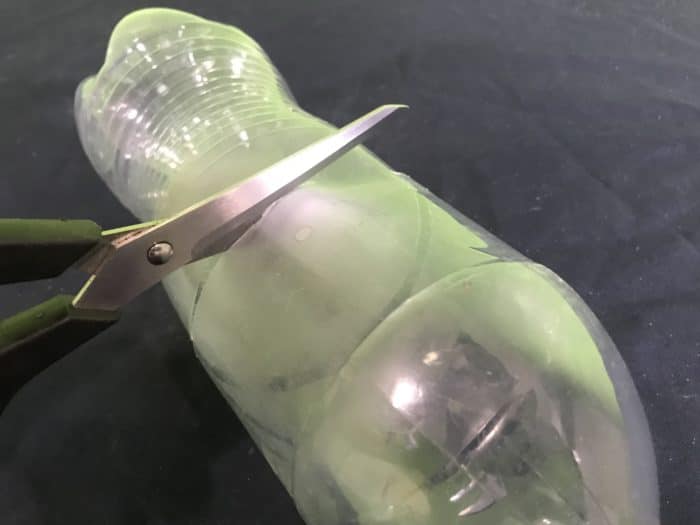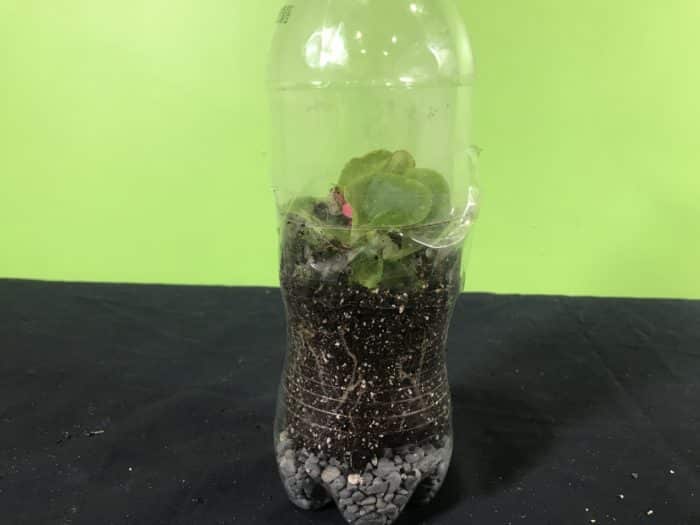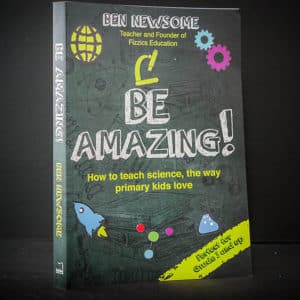You will need:
- A clean, transparent 2L PET bottle
- Scissors
- Sticky tape
- Soil
- Pebbles
- Charcoal fragments
- Small plants


Get the Unit of Work on Plant Biology here!
- Learn about the parts of a flower
- Discover how vascular tissue transports water & sugars around the plant
- Learn about plant pigments and adaptations to the environment
- From photosynthesis to transpiration & more, there’s a heap covered!
Includes cross-curricular teaching ideas, student quizzes, a sample marking rubric, scope & sequences & more

School science visits since 2004!
– Curriculum-linked & award-winning incursions.
– Over 40 primary & high school programs to choose from.
– Designed by experienced educators.
– Over 2 million students reached.
– Face to face incursions & online programs available.
– Early learning centre visits too!
More Information
The biosphere is a closed ecosystem
…you just need to add sunlight and some water. The charcoal acts as a filter, purifying the water as it cycles through the system. You can also create an aquarium in a PET bottle, with water plants, rocks and some water from your local creek.
Applications
Scientists have long been interested in studying the interactions between living organisms and their environment in order to better understand how life functions on Earth and potentially on other planets. One way that scientists study these interactions is by creating biospheres, which are self-contained, closed ecosystems that can sustain life for an extended period of time.
Biospheres are designed to mimic natural ecosystems and are often used to study how living organisms interact with each other and with their environment. One area of particular interest is nutrient use, as understanding how nutrients move through an ecosystem can help us better understand how to manage natural resources and ensure the sustainability of life on Earth.
One example of a biosphere experiment is the HI-SEAS mission, which takes place in Hawaii. This mission involves a team of scientists living and working in a simulated Martian habitat for extended periods of time, studying the psychological and physiological effects of long-duration space missions. The habitat is designed to be self-sustaining and provides the crew with all the resources they need to survive, including food, water, and air.
The HI-SEAS mission is an example of how biosphere experiments can help scientists better understand how living organisms interact with their environment and with each other. By studying the nutrient cycles within the habitat, scientists can learn about the best ways to manage resources in space and on Earth. They can also study the psychological and physiological effects of living in a confined space for extended periods of time, which is essential for future long-duration space missions.
Variables to test
- Vary the initial growing conditions in terms of nutrients or the different plants used
- What happens when you vary the heat or light exposed to the biosphere?
Teaching about sustainability? From Plants for Life to Renewable energy, we’ve got your unit covered!
Get in touch with FizzicsEd to find out how we can work with your class.
Little Life
Years K to 6
Maximum 30 students
School workshop
60 or 90 minutes
Online Class Available
STEM Full Day Accelerator - Primary
Designed from real classroom experiences, this modular day helps you create consistently effective science learning that directly address the new curriculum with easily accessible and cost-effective materials.































Comments